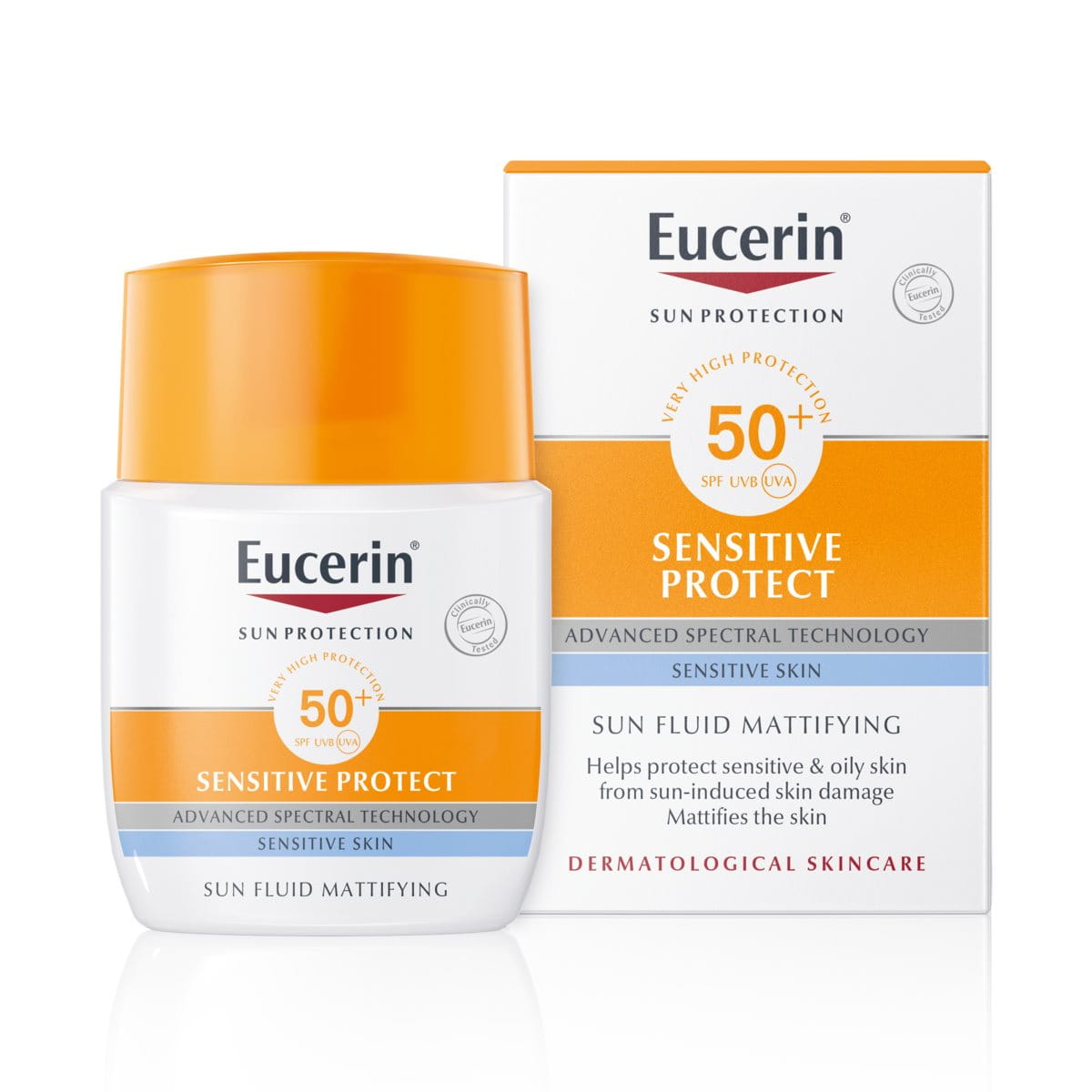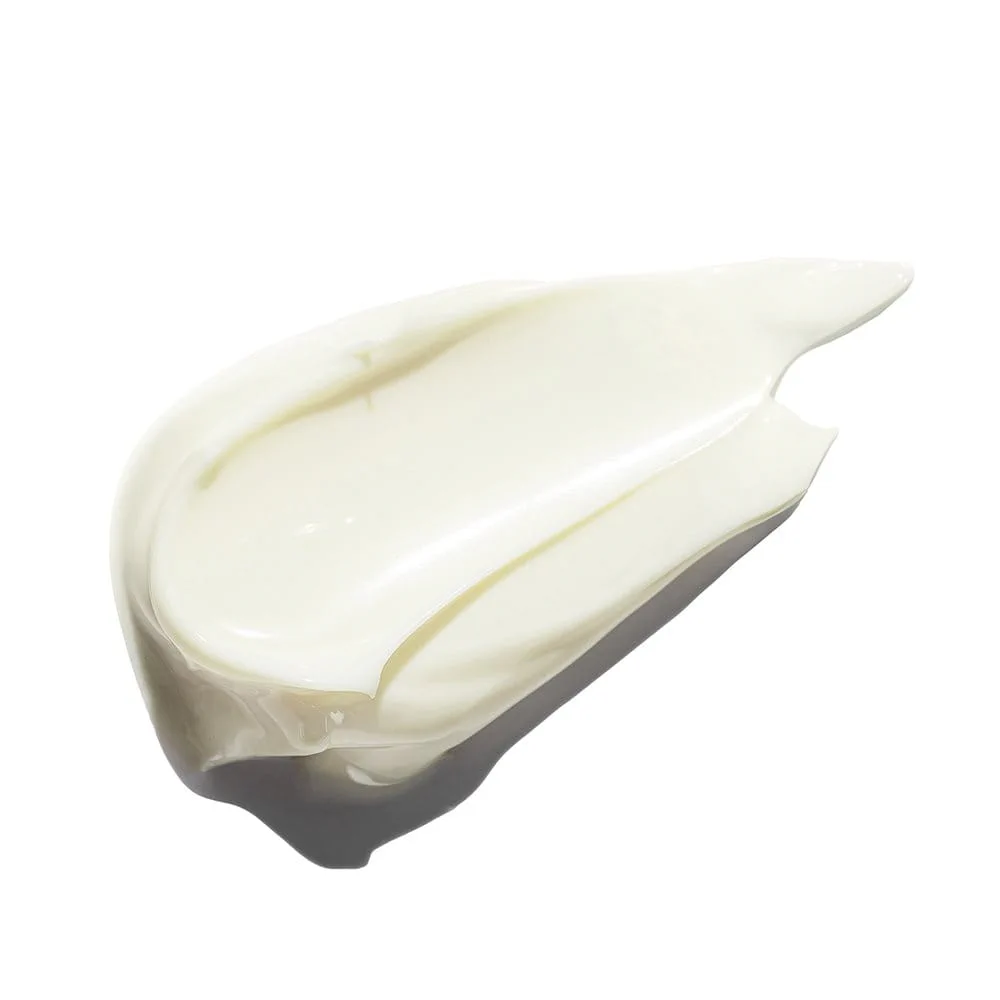We take responsibility. For your skin. And our planet.


We take responsibility. For your skin. And our planet.
About
A mattifying facial sunscreen that protects sensitive and oily skin
UV light is the main cause of sun-induced skin damage, but high-energy visible (HEVIS) light can also induce free radicals that cause further stress to skin.
Eucerin Sensitive Protect Sun Fluid Mattifying SPF50+ is an everyday sunscreen that protects and mattifies sensitive and oily skin. The Advanced Spectral Technology combines broadband and photostable UVA/UVB filters(1) for very high UV protection with Licochalcone A to neutralize free radicals caused by UV and HEVIS light. The sun fluid also includes Glycyrrhetinic Acid which supports skin’s own DNA repair mechanism.
Unperfumed − and with an ultra-light, non-greasy texture that does not leave an oily shine − Eucerin Sensitive Protect Sun Fluid Mattifying SPF50+ is clinically and dermatologically proven to be very good tolerated by sensitive skin.
(1) Meeting the high standards for UVA and UVB protection defined by Cosmetics Europe. The levels of UVA protection are higher than the EU recommendation.
Ingredients
We choose all our ingredients with great care and never compromise on quality. Learn more about the key ingredients of this product.
The ingredients in our brand products are updated regularly. For this reason, occasionally there may be discrepancies between the ingredients on our website and on our product packaging. We therefore recommend that you always pay attention to the information on our product packaging and check the ingredients listed there.
Glycyrrhetinic acid (also called Enoxolon) is derived from the roots of Glycyrrhiza glabra (licorice plant) and is well-known in traditional Chinese medicine. It is a pentacyclic triterpenoid with anti-inflammatory and antimicrobial properties.
Glycyrrhetinic acid helps to preserve the level of hyaluronic acid and elastin against enzymatic degradation by hyaluronidase. Furthermore supports the skin's own repair mechanism against UV-induced DNA damage.
Licochalcone A is a potent anti-inflammatory and antioxidant active that is derived from the roots of the Chinese licorice plant Glycyrrhiza inflata. Licochalcone A protects cells from oxidative stress mediated by UV and blue light (HEVIS).
Licochalcone A is able to activate anti-inflammatory, antioxidant and detoxifying enzymes. These enzymes protect the skin cells from damage induced by oxidative stress, like lipid peroxidation and DNA as wells as protein damage. Licochalcone A is able to soothe irritated skin and redness.
How do I know which SPF to use?
Sunscreens are available in four different levels of protection: low (factor 6 to 10), medium (15 to 25), high (30 to 50) and very high (50+). The higher the protection factor the better your skin is protected, but it’s important to apply the product thoroughly (be careful not to miss any bits) and to reapply it generously every two hours.
What is the difference between UVA and UVB rays?
UVA rays penetrate the deeper layers of skin. They stimulate the production of free radicals in the skin which cause oxidative stress and can lead to indirect DNA damage (where the free radicals modify cellular DNA over time). UVA rays are most commonly associated with photoaging (premature skin aging caused by the sun). They can also trigger sun allergies such as Polymorphous Light Eruption (PLE). UVB rays can also provoke allergies, but to a lesser degree.
UVB rays provide the energy your skin needs to make Vitamin D and stimulate the production of melanin which is responsible for tanning. They don’t travel as deeply as UVA rays, penetrating only the outermost layers of skin, but they cause more immediate damage such as sunburn. UVB rays are directly absorbed by cellular DNA which can lead to skin diseases such as actinic keratosis and skin cancer.
Both types of UV can induce hyperpigmentation and may contribute to conditions such as sun spots (also known as age spots) and melasma.
What is high-energy visible light and why does my skin need to be protected from it?
The sunlight spectrum consists of UV, visible and infrared light. Visible sunlight can be detected by the human eye, while the others remain invisible. Part of this visible spectrum has a high energy level and is known as high-energy visible light. It is also referred to as HEVIS light, HEV Light, HEVL and sometimes ‘blue light’ or ‘blue violet light’.
Like UVA rays, HEVIS light penetrates the deeper layers of skin (the dermis) and can generate free radicals. These free radicals are one of the main causes of photoaging (premature skin aging caused by the sun). They interfere with skin cells and break down the collagen and elastin that gives our skin its plump, youthful appearance. HEVIS light has also been linked to uneven skin pigmentation and melasma.
Many modern sunscreens offer effective protection against UVA and UVB rays, but we recommend that you look out for products that also defend against the negative effects of HEVIS light. These products will give your skin reliable protection from photoaging and, in the long run, can also help to combat visible signs of skin aging such as wrinkles.
Why should I integrate sun face care into my daily routine?
Facial skin is more sensitive to UVA/UVB radiation than skin on the rest of the body as it is exposed to sun all year round. Sun protection can help you avoid the cellular DNA damage caused by UV, photoaging (premature aging caused by the sun) and hyperpigmentation. It is important to protect facial skin whenever it is exposed to the sun.
Read also some related articles
Glycyrrhetinic Acid, Licochalcone A, UVA/UVB Filter
Learn More
